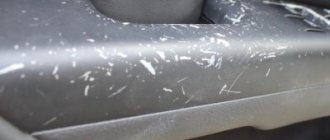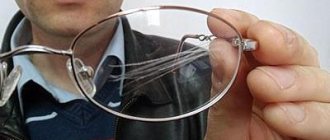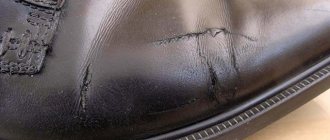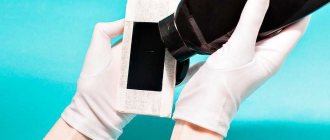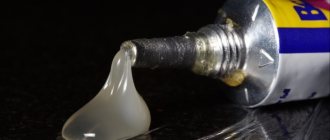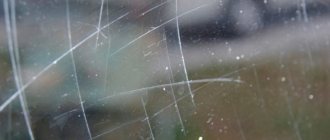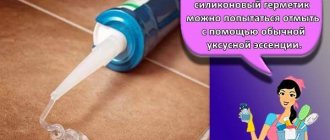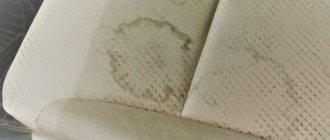Plastic, or plastic, is a common material based on natural and synthetic polymers.
It does not have high strength; mechanical stress on it leads to unwanted damage - scratches and cracks of varying depths.
This does not mean that the product is completely damaged. There are several ways to remove a defect or carefully disguise it.
We will tell you in this article how and what you can use to remove scratches from plastic (transparent, black, matte, etc.).
How can I remove minor damage?
Professional products will help you deal with minor damage to plastic products. Special pencils, markers, pastes, polishes and even household appliances will help put the product in order and give it a shiny new look.
Polish
A variety of industrial polishing compounds can get rid of scratches on matte or glossy plastic. It is enough to choose the appropriate composition, focusing on the manufacturer’s instructions.
Mode of application:
- Clean the damaged surface from dirt.
- Apply a small amount of product to a soft cloth.
- Rub the polish into the scratches without applying strong pressure.
- Remove any remaining product with a damp cloth.
- Let the plastic dry.
To avoid getting the opposite result, it is not recommended to use products with coarse abrasive particles.
Wax
To combat mechanical damage to plastic products, soft wax is often used. It fills voids and polishes the surface.
Mode of application:
- Apply a small amount of product to clean, dry plastic;
- Use a soft cloth (microfiber) to rub the wax into the scratches;
- remove excess with a cotton swab;
- polish the surface.
Wax can be replaced with machine oil or Goya paste, the method of application is identical.
Hairdryer
Plastic has a low melting point, so hot air will help remove minor defects on it . The voids of the damage are filled under the action of the surface tension forces of the molten plastic.
For these purposes, construction and household hair dryers are used. A construction hair dryer differs from a household hair dryer in terms of power; it is capable of heating air up to 700 °C
Step-by-step instruction:
- Clean the surface.
- Direct hot air from the device towards the defect.
- Move the device in the direction of the scratch, without staying in one place for a long time.
- Let the plastic cool for 15-20 minutes.
- Polish the restored surface.
It is necessary to select the optimal heating temperature and the distance from which the air flow comes. If the product overheats, streaks may form. Minor damage can be repaired using a regular lighter.
Conceal stains with a specialized pencil
If the defects are minor, you can use a special pencil. When purchasing it, you need to choose the color as accurately as possible. If the shade is even slightly different, then, of course, you will get rid of the scratch, but instead, stripes will appear on the surface of the torpedo.
The principle of operation of such a pencil is very simple - inside a small bottle there is a rather thick coloring composition that fills the crack and dries, thereby completely leveling the surface.
To use a marker, just wipe the surface from dirt and dust and, pressing on the pencil, squeeze the “putty” into the recess. It is recommended to remove excess composition and polish the surface.
Despite the simplicity of this method, it is worth considering the rather high cost of the pencil. However, this product can be reused.
If the damage is quite deep, then there are several other ways to repair the surface.
How to get rid of deep marks?
An effective method for dealing with deep damage to a plastic surface is sandpaper (sandpaper) with different grain sizes. It is moisture resistant, has abrasive properties, and is suitable for preparation, grinding and polishing.
Mode of application:
- wet the 800-grit sandpaper, this will soften the particles and prevent the appearance of new defects on the plastic;
- sand the damage in a circular motion until the scratch disappears;
- treat the surface with a damp, clean cloth;
- wipe the plastic dry;
- perform final sanding with fine sandpaper (grit size - 1200-1500);
- polish the surface with a special product.
Polishing pastes and sprays should be intended for processing plastic or acrylic; industrial compositions for paint and varnish surfaces are not suitable.
Features of eliminating damaged areas on a plastic product
The color of the material and structure will help you choose a suitable product for masking shallow damage on a plastic product.
On transparent
Hard rags and sponges, time, ultraviolet rays, household chemicals with an aggressive composition are an incomplete list of reasons why transparent plastic loses its appearance.
Traces of mechanical damage can be removed from it only by polishing. Suitable for this:
- disc scratch remover;
- glass cleaning liquid;
- polish for jewelry.
You can use compounds intended for wooden surfaces if you mix them with Vaseline. The algorithm of actions for all methods is the same:
- Apply the product to a microfiber cloth.
- Treat the damaged surface.
- Polish thoroughly.
It is believed that transparent plastic is more susceptible to damage due to mechanical stress. In fact, scratches do not appear on it more often than on colored or matte ones, but they are more noticeable.
Tip for restoring the transparency of plastic - in the video:
Black
Scratches on black plastic can be masked by painting; damaged areas are always visible due to the lighter color.
Ideal for eliminating deep and small scratches, a special corrector pencil is suitable; it fills the resulting voids and makes traces of mechanical damage less noticeable.
Mode of application:
- Clean the surface thoroughly using detergent and a cloth.
- Wait until completely dry.
- Apply the contents of the pencil to the damage.
- Polish the surface using a wax-based product.
It is necessary to choose the correct shade of the filler so that it matches the main color as closely as possible.
White
Traces of mechanical damage on white plastic are less noticeable, but dirt and dust accumulate faster in the voids of scratches, so you need to get rid of them immediately.
You can replace the damaged part , but advice from manufacturers will help you avoid unplanned expenses. All irregularities from white plastic can be removed with 600-grit sandpaper.
If the surface is glossy, additional treatment will be required to add shine with an industrial product, for example, COSMOFEN 10. The product is a solvent, you must work with it with gloves and follow safety precautions.
Matt
Damage on matte plastic is less noticeable; often for white surfaces, sanding scratches and cracks with sandpaper is sufficient.
For multi-colored materials use:
- sponges with shoe polish,
- proofreaders,
- markers,
- silicone,
- and even powdered coal.
Tsvetnoy
Mechanical damage to colored plastic cannot always be masked using polish. To make the scratch truly invisible, you need to use a wax pencil , which is easy to use.
It is enough to clean and degrease the surface and trace the damage with a colored pencil several times. The wax will fill the voids. With the correct selection of shade, the treated area will not differ from the main color.
It is better to purchase the product in a special store (hardware or automotive) to avoid cheap counterfeits.
Painting with structure spray (using structure paint)
Deep scratch on the bumper or scuffs, scratches on the black unpainted bumper protection strip? There is no need to replace the bumper or its element, however, chemicals will not help here either.
In this case, texture paints (those that create a rough surface that imitates the original, typical texture of a bumper or black buffer on a car's bumper or side moldings) are best suited for repairing such elements.
To remove scratches, they must be sanded with abrasive paper, and larger voids will need to be primed, having previously degreased the surface. You can start painting.
It is important to know!
An experienced specialist can paint even part of the bumper in such a way that you will not be able to see the “transition” between the untreated and updated surface. However, if the bumper is old and covered with a network of small scratches, faded and generally looks unsightly, it is better to restore the entire element.
As experts say, in general, to apply this paint you can use a wide brush with soft bristles, but wisely, for a better result, you should use a sprayer.
Any paint manufacturer can be used, however, application and painting instructions must be strictly followed, otherwise the paint will begin to flake and fall off.
Minuses
One of the disadvantages is the relative high cost of restoration work at service stations. With proper painting, you will need to remove elements (bumper, moldings) from the car, carry out painting work and put everything in place. Depending on the prices of the workshop and the scope of work, a turnkey restoration can cost a pretty penny. True, the result will be of the highest quality.
You can do everything yourself, saving many thousands of rubles. But no one will guarantee quality in this case. You need to carefully read the instructions for use, read forums, pay attention to the experience of other repairmen, and only then begin to act.
Example from Drive2 website from user Frazer17: www.drive2.com
A hybrid option is also possible. Remove the bumper and moldings and send them for painting. Perhaps this option will be the most relevant for the majority. Here, the quality will remain high, and the check will not hit your pocket as much.
How to fix scratches on plastic in a car?
To care for the plastic surfaces of your car, you can use both traditional methods of combating scratches and specialized products that are sold in car dealerships.
The damaged area must first be degreased with alcohol or acetone. It is not recommended to use degreasers with aggressive chemical compositions; this will lead to the formation of new defects.
The simplest and most convenient way to deal with minor scratches is to use industrial wipes. A few minutes of active exposure of the microfiber cloth to the plastic surface and minor defects will disappear. Towels are also indispensable for maintaining cleanliness in the car interior.
For more complex damage, it is necessary to use polishes, the method of their use in the video:
Alternative Scratch Removal Methods
It is worth considering not the cheapest, but quite effective means for restoring the damaged plastic surface of a car dashboard:
- Painting. In this case, you will need a small bottle of paint; they are usually sold together with a brush. After treatment, it is best to additionally coat the chipped area with varnish.
- Vinyl. A special vinyl film is tightly stretched over the damaged part and treated with a hairdryer. Thanks to this method, you can completely hide fairly large chips, but you will have to practice.
- Leather. This method relates rather to the restyling of the car interior, since it involves re-upholstering the panels. However, if you know how to work with leather, then you can only integrate individual pieces of it. But it is worth considering that leather elements will look rather ridiculous in a velor or rag interior.
Some people also cover scratches with carbon fiber, but such a product will most likely cost several times more than a new part. Therefore, there is no point in using carbon.
Adviсe
Industrial pencils, abrasive gels, and polishing pastes effectively remove defects from plastic, but they are quite expensive.
Available tools that can be found in the arsenal of any housewife will come to the rescue:
Toothpaste .
The method is suitable for cleaning plastic screens and displays. Apply a small amount of product to the damaged surface and rub in in a circular motion. When the surface dries, the residue should be washed off with a damp cotton swab.- Vegetable oil . The liquid masks minor scratches and adds shine to the plastic. Apply 3-5 drops to the damaged surface and polish until the characteristic greasy drops disappear.
- Baking soda . The abrasive acts like toothpaste. Add water to the powder until it reaches a paste consistency, rub into the surface, and rinse off any remaining residue.
The methods are not suitable for eliminating deep traces of mechanical damage.
If you are interested in how to remove small and deep scratches from various surfaces and objects, take a look at this section.
finishing
After sanding the surface, a finishing treatment must be carried out to achieve the best results. The finishing will allow you to perfect your work and make your motorcycle's plastics look like new. For this step you should use polishing foam on an orbital sander . If this material is not available, you can polish by hand using a cotton swab with polishing liquid or polishing paste.
When using an orbital sander, we recommend using a moderate pace to avoid heating up the plastic. As for the finish itself, first dampen the foam or buffing pads of your choice. Then apply some product and some water to the surface to keep it moist throughout the exercise.
Finally, rub the scratches in small, tight circles for a perfect finish. Rub in for a long time until you are satisfied with the result. Finish the cleaning by polishing the plastic with a wool cloth.
